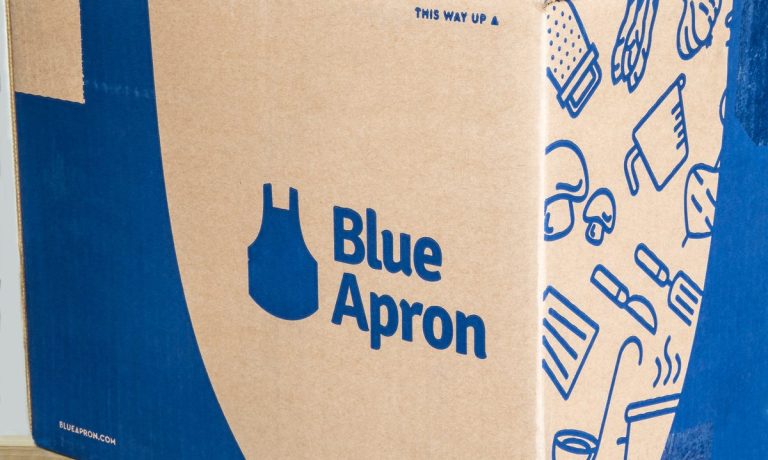
Meal kit engagement may have spiked during the pandemic, but as consumers have returned to their lives away from home, many have been looking for quicker meal solutions and for offerings that require less of a commitment in advance. As such, meal kit providers have been diversifying into a range of different areas, from quicker recipes to prepared foods and more.
Most recently, Blue Apron announced Wednesday (June 1) the launch of single-purchase multi-serving meal kits and ready-made Heat & Eat meals on the Walmart Marketplace.
See also: Blue Apron Launches Walmart eCommerce Offering as Meal Kits Diversify
In an interview with PYMNTS, Dani Simpson, chief marketing officer at Blue Apron, discussed how this partnership fits into the brand’s overall distribution strategy, saying that these sorts of initiatives offer an easier first entry point into the brand for consumers, encouraging further engagement down the line.
“This is our first foray into expanding our ecosystem into our omnichannel strategy,” Simpson said. “This is the part of our partnership strategy that is diversification. … Through these third-party sales platforms, we’re able to bring a significant new audience to Blue Apron, and … we’re really hoping that we can remove the barrier for trial by using this eCommerce channel.”
A Foot in the Door
Simpson noted that the best-case scenario for the brand would be for consumers to try the brand’s offerings through this Walmart shop and to be converted into fans, funneled into Blue Apron’s direct to consumer (D2C) subscription offerings, but this would not be the only possible positive outcome of the partnership.
“In the world that we live in today, if a potential consumer prefers to buy something non-subscription and wants to do that on a cadence that works for them, that’s OK with us too,” Simpson said.
Certainly, Walmart’s website has a wide reach. In fact, more than 1 in 4 consumers makes an online purchase from Walmart each month, according to data from PYMNTS’ recent study “The Benefits of Membership: Mass Retailers and Subscription Services,” which drew from a census-based survey of more than 2,100 U.S. consumers in late January and early February.
Related news: New Report Shows Impact of Amazon Prime, Walmart+ on Consumer Spend
The Walmart storefront is not the brand’s first partnership with a third party to sell one-time meal kits. In December, Blue Apron announced a partnership with Amazon offering voice assistant cooking instructions on the meal kit provider’s recipes through Alexa-enabled devices, and as part of the initiative, Alexa device users could order select meal kits without a subscription.
However, Simpson noted that the Amazon partnership was more about the guided instructions than about providing an easy, intuitive ordering experience.
“[Ordering from Alexa] isn’t as seamless,” she said. “[With Walmart,] we have a storefront, and you can directly purchase from there. So, this is this is the first fully integrated API that we have as it relates to eCommerce.”
Connected Commerce
The Walmart partnership also enables the meal kit provider to integrate its offerings into consumers’ typical grocery shopping routines. Typically, with the D2C subscription model, consumers order the brand’s products when they specifically seek them out. With Walmart, the meal kit purchasing experience can be integrated into consumers’ other food shopping occasions, enabling it to fit more seamlessly into customers’ meal-planning practices.
“The Walmart customer is obviously looking for online shopping as a way for convenience,” Simpson said. “I really feel like we’re just one part of the consumers week, and we can be in an add to their shopping cart.”
A large share of consumers make grocery purchases from Walmart each month. According to data from PYMNTS’ study “Decoding Customer Affinity: The Customer Loyalty to Merchants Survey 2022,” created in collaboration with Toshiba Global Commerce Solutions, which drew from a survey of more than 2,000 U.S. consumers, 28% had made a grocery purchase from the mega-retailer’s website in the previous 30 days.
Read more: Decoding Consumer Affinity: The Customer Loyalty To Merchants Survey 2022
‘Tis a Gift to Be Simple
Simpson argued that, in recent years, with so much competition in the meal kit space, it has become increasingly vital to differentiate offerings by making items more convenient to acquire, ensuring that recipes are simple and able to be prepared within a short time frame.
Others in the space have made similar observations, noting an increased demand for low-time, low-effort meal kit options that leave consumers with more free time.
You may also like: In 2022, Meal Kits Will Adapt to Be More Convenient
“I don’t see [third-party channels] ever overtaking our subscriptions — we are a subscription at the core — but … a lot of customers are afraid of [the subscription model] in terms of, ‘What does a subscription mean to me?’ and don’t want another subscription,” Simpson said. “So, I really hope that we can use these channels as a way to connect [with them] in other ways.”